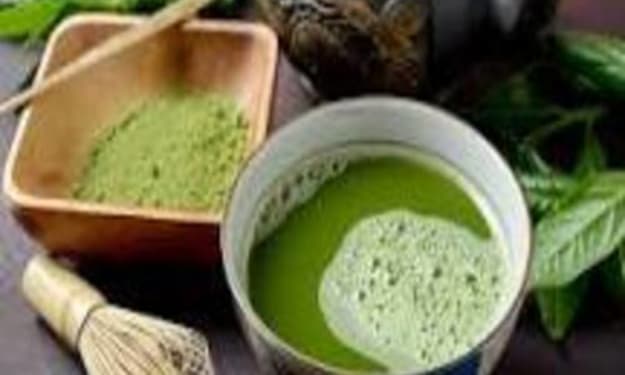PAINTING FOREVER
How To Paint On Fabric And Textiles

Fabric painting is an art that you will enjoy doing. Through fabric painting, you can provoke the creative artistic side of yours!
There are incredible benefits of fabric painting, you can customize old bedsheets, cushion covers, and even your T-shirts by creating elegant designs on them with simple techniques that everyone can do.
In this article, I've mentioned all the supplies and an easy step by step guide that will help you create beautiful designs on fabric
Supplies for getting started with fabric painting
If you are a beginner then you don't need to spend too much on buying supplies. To start with fabric paint you will just need primary colors like red, yellow, and blue, some basic brushes, cardboard to separate the two layers of the cloth, some tissues to wipe, and two to three cups of water and that's all you will need to start with your creative journey!
But if you are a stationery lover like me and want to buy some more cool stuff then keep reading!
Brushes
Flat Brushes: This brush is most commonly used in fabric painting. It is also known by the name 'Shader Brush'. It is mostly used for highlighting, shading, and blending.
Round Tip Brush: This brush has more organized bristles and that's why it is used for detailing.
Liner Brush: It is used for making lines.
Foam Brush: This brush is used on a large surface area. It is mostly used for applying the basic layer of color. It comes with a wooden handle.
Outliners Filled With Paint: These are used for making a 3D painting but it does not help make liquid embroidery on the garments. This brush is mostly used for glass painting
Permanent Markers: These are used for making outlines.
Soft Brushes: These brushes help in giving the paint a watercolor effect
Scrubber brushes: These are made of tapered bristles. They are perfect for blending color and for creating short and rough strokes.
Stamps: These are already made designs, you just need to dip them in paints and apply it on your favorite piece of cloth.
Sponges: These are great absorbents, and therefore can be used for applying paints
Other than this, dip pens, airbrushes can be used for fabric painting.
And yeah! The tip is 'Always clean your brushes after completing your artwork' otherwise you will soon lose the soft bristles of your favorite brushes!
Paints
The first question that comes to our mind while painting on fabric is what type of color should we use for it? So here is the answer:
Mostly acrylic fabric paints are used to paint on fabric. They can be used separately or we can also mix them with fabric medium. Fabric medium is an opaque and thick fluid and after applying it to fabric cloth, when it dries off it gets transparent or colorless. It can also be used with acrylic paints or textiles paints to give a watercolor effect without causing the fading or changing of the color. Another benefit of the fabric medium is that it doesn't cause bleeding and spreading of the paint.
We can also use ordinary acrylic paints by mixing them with fabric medium. Fabric medium gives the paint a flexible look otherwise if we use the acrylic paints separately, it cracks and peel off when it dries. To make this mixture you have to add one part of fabric medium and two parts of any acrylic paint, after adding just mix them properly and your paint is ready!
If you don't like the glossy appearance of your paint, then you can mix Matte Medium with acrylic paint to give it a matte appearance.
To give a watercolor appearance to your paint, you just have to mix water with acrylic paint on a ratio of 5:1. There is a Gel medium available if you want to give a glossy appearance to your painting. It is a non-yellowing protective coating which protects the paint from water and UV-rays.
Always read the instructions!
Make sure you always read the instructions on the fabric paint pot before you start with your painting and try to swatch the paints on a piece of cloth before applying it to the actual fabric because many fabric paints dry 24 hours after applying it and some paints need to heat set or iron them before washin
Which colors to choose if you are a beginner?
If you are a beginner there is no need to buy all the colors, you will just need the primary colors such as red, blue, and yellow and two basic colors (white and black). And mix two primary colors to make a secondary color such as if you will mix red and yellow together a new color will be formed which is orange and blue and red will make purple/ violet color and use black and white colors to darken and lightning the shade such as if you will mix 2 parts of white and 1 part of red you will get the light pink color
Fabric
For painting, most often the cotton fabric is preferred because it is tightly weaved. If you paint on a loosely weaved fabric then there are many chances that the paint may spread or bleed but when you use a fabric that is tightly weaved then the paint gets a large surface area to be absorbed. If you are going to make a painting that needs broad brush strokes then the loosely weaved fabric can prove better but if you are going with the small detailed work then you should go with tightly weaved fabric.
Light-colored fabric is mostly preferred because a small amount of paint can work on it but if you have picked a dark-colored fabric then there is no need to worry, you just need to apply more than two layers of the paint so that it doesn't look faded
Other than cotton we can also paint on rayon, satin, quilting fabric, flannel, linen, canvas, silk organza, suede, terry cloth, velvet, velveteen, leather, and most synthetic fabrics. Just start your painting journey by picking any T-shirt at your home or try on bedsheets, cushion covers, and curtains.
A styrofoam sheet/ cardboard sheet
A cardboard or styrofoam sheet which will be needed to separate the two layers of the cloth so that we don't stain the other layer while painting. Use a bigger sheet than your design to cover all the area
Other than brushes, paints, fabric, and styrofoam sheet, you will also need two to three containers of water, a piece of cloth or tissue for wiping off the extra paint from brushes, a separate iron, some extra dry brushes, a plastic sheet which will protect the surface from staining, and a plastic palette for mixing colors
Step By Step Guide On How To Do Painting On Fabric
Step 1 Prepare Your Fabric
Select Fabric: It is the first step, to begin with, as I have mentioned before you should use any fabric which is tightly weaved for better results.
Wash Your Fabric: Prewashing the fabric is a very essential step. It will remove the fabric finishing material which is applied to the clothes after manufacturing and that's how the paint will penetrate in all the holes of fabric and you will achieve better results, prewashing will also prevent the unwanted shrinkage and wrinkles.
Iron The Fabric: Ironing the fabric will remove all the wrinkles, which will ease the process of painting.
Placing A Barrier: Use cardboard or styrofoam as a barrier between the front and back layers of cloth so that you don't spoil the fabric by bleeding or spreading the paint.
Pin The Fabric: Tuck the pins on each side to prevent the fabric from shifting.
Step 2 Prepare The Work Space
For painting on fabric, you should work on a flat surface and cover it with plastic to prevent the spread of color to your floor or work table. Stretch the fabric, place the cardboard layered with wax paper between the front and back sides, and tuck the fabric with the cardboard to prevent from shifting of the fabric. If you don't have cardboard you can also use a thick newspaper. Keep all the paints and all other supplies that you will use during the painting near you.
Use separate brushes for each shade, don't ever use the same brush in two different shades, in that way you will ruin the whole bottle of paint.
Step 3 Start Your Painting
Different Techniques Of Painting
Airbrushing- Take a toothbrush and dip it in the paint and sprinkle on the material. Easy as that!
Stenciling- Stenciling is a very easy technique. Take a printout of your favorite design, cut the inside portion of that design with a knife or blade and put it on the fabric, and just play with your paint.
With The Use Of Salt!- Sprinkle some salt on the fabric and apply your paint, this will give an amazing crackled effect to the design.
Stamping- Use your favorite stamp and dip it in the paint, place it on the fabric and apply some amount of pressure on it, and ta-dah! your design is made. If you don't have stamps you can cut your desired design from cardboard and use it as a stamp.
Use Melted Wax To Create A Batik Print On Fabric- Apply melted wax on the fabric, then apply a layer of paint and you will get an amazing result.
Watercolor Effect- For achieving a watercolor effect, wet the fabric with water and then apply some paint.
Marbling- This is an incredible technique and yet easy to create. Take a cup of water, add some drops of color one by one and let them spread then with a stick change the position of those layers. After that just throw the water on the fabric and you will get the results.
Other than these ideas, you can also try your artistic techniques by drawing and creating some wonderful designs.
If you are going to make your piece of art on the fabric then it is very necessary to draw a rough sketch of the design with the help of a pencil or washable ink pen. After drawing, dip your brush in the paint, take a small amount of paint on the brush, first paint the edges of the design and then fill the center. Applying light strokes first will make a clean base and then you can apply a second layer to darken the shade.
Pro tip: Cover your paints while painting as they can dry and will be of no use. Always! Always use separate brushes for different colors
Step 4 Wait!
After completing the artwork, keep the painting in one place for 24 hours. Do not wash, iron, heat, or wear it until it dries off completely. Otherwise, you will ruin all your efforts.
Step 5 Heat Set
It is a very essential step that we do after the paint has dried in 24 hours, heat set is done to make the paint permanent.
First of all, read the instructions on the paint pot, it tells different indications for different types of paints. But the common way to heat set it is, by ironing. Use the parchment paper on the front of the design and iron the reverse side of the paint. Set as much high temperature that the fabric can tolerate and place the iron and press it for 30 to 45 seconds. If you have painted on a fabric that is stick to the furniture then place a cloth between the paint and the iron then press the iron and fix the paint. If your fabric is silk or leather and you can't iron it then you can heat set the paint with the help of a hairdryer. You will have to heat set it for 30 minutes straight! If your paint is puffy and you don't want it to flat down then you can heat set it by placing the heated iron a little away from the painting that's how you can preserve the puffiness of your paint.
Heat set every inch of the paint and make sure every part of paint come in contact with the iron or dryer.
Step 6 Wash The Painted Fabric
When you are washing the cloth, turn the garment inside out. Handwashing is mostly preferred, but you can also wash it gently on low power in the washing machine with a mild detergent.
Do not dry the cloth in the dryer machine after washing just dry it in the heat.
Read more about Painting
About the Creator
Dandelionclub
Writer, Hobbyist, Traveller, Art Lover





Comments
There are no comments for this story
Be the first to respond and start the conversation.